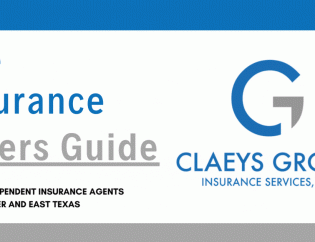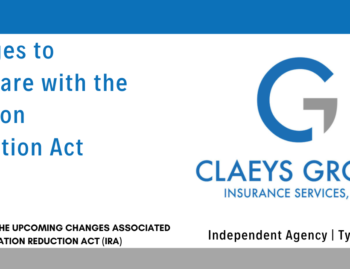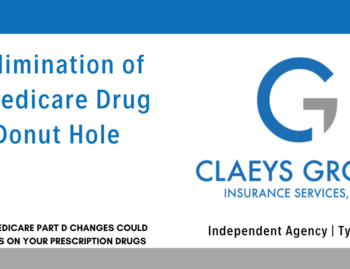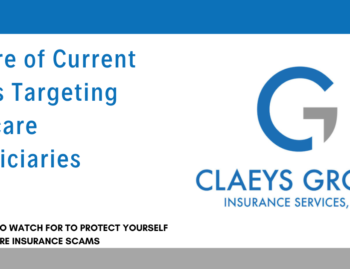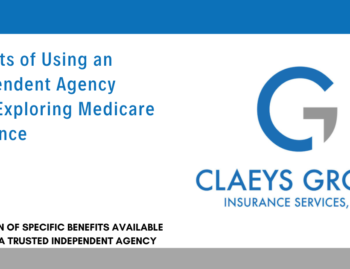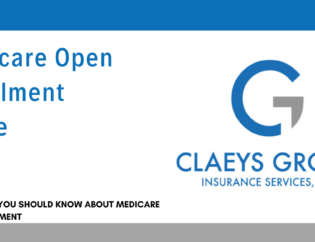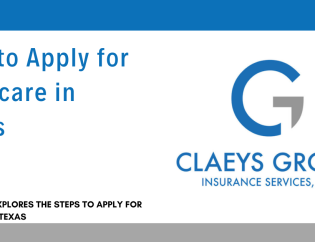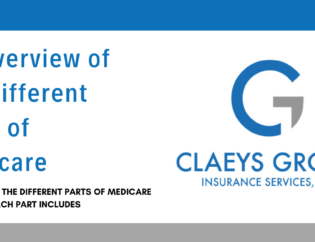
Today, we will answer the oft-asked question, “How Much Does Medicare Cost at Age 65?”. Our goal in this article is to help readers turning 65 understand the cost of Medicare enrollment and ongoing costs beyond initial enrollment. We aim to clear up some of the confusion that is common with the topic of Medicare enrollment and Medicare coverage.
How Much Does Medicare Cost at Age 65?
In order to answer the question, “How much does Medicare cost at age 65?”, a basic understanding of how the Medicare program functions is critical.
First, know that Medicare has many Parts. This article deals with Parts A-D. For a more comprehensive discussion on the different parts, please visit the following article:
Basics of Medicare
For the purposes of this guide, we’ll just cover the basics.
- Original Medicare consists of:
- Medicare Part A: provides inpatient/hospital coverage.
- Medicare Part B: provides outpatient/medical coverage.
- Medicare Drug Coverage is an optional plan consisting of:
- Medicare Part D: provides prescription drug coverage.
- Medicare Advantage (Medicare Part C) offers a private alternative to Original Medicare:
- Medicare Part C: an insurance plan provided by private companies which requires prior enrollment in both:
- Medicare Part A (Hospital Coverage)
- Medicare Part B (Medical Coverage)
- Most Advantage plans also provide:
- Medicare Part D (Prescription Drug Coverage)
- Additional benefits for Vision, Hearing, and Dental
- Medicare Part C: an insurance plan provided by private companies which requires prior enrollment in both:
- Medicare Supplements (sometimes called Medigap) are optional coverage that is added to cover costs that are not covered by Original Medicare. Medicare Supplements provide protection against the cost Original Medicare doesn’t cover.
READ ALSO: Medicare Supplement Plans Comparison
Understanding these basic concepts of Medicare, we can now begin to address our original question, “How Much Does Medicare Cost at Age 65?”.
Most Medicare enrollees don’t pay premiums for Part A hospital insurance because either themselves or their spouse paid payroll taxes to cover it while working.
Medicare coverage isn’t free. Beneficiaries must also pay monthly premiums as well as out-of-pocket costs such as deductibles and copayments that add up quickly.
Medicare Part A
Medicare Part A is available free to most people 65 or over because either they or their spouse paid Medicare taxes while working; payments are deducted directly from paychecks under the Federal Insurance Contributions Act (FICA).
Medicare Part A covers inpatient hospital stays at hospitals, critical access hospitals and skilled nursing facilities for rehabilitation or long-term care purposes, hospice services and some home health services. Unfortunately it does not cover doctor fees during a hospital stay which are covered by Medicare Part B.
Most people automatically enroll in Medicare Part A when they turn 65; if not, individuals need to take action by enrolling during their initial enrollment period: which lasts seven months from three months prior to your birthday month through to three months post birthday month.
People who miss their initial enrollment period can still enroll during a general open enrollment period that begins January 1 or in a Special Enrollment Period for specific events; if they continue working past age 65 and their group health plan requires it, however, a special enrollment period (SEP) must first occur before enrolling.
SEE ALSO: How to Apply for Medicare in Texas
Each person’s monthly Medicare Part B costs will depend on their income; those with higher incomes will pay more, but may qualify for Extra Help and Medicaid to reduce costs.
Cost of Medicare Part B includes monthly premiums, deductibles and coinsurances. Your out-of-pocket deductible in 2024 is $240 while coinsurances represent the percentage of services after meeting your deductible. On average, this figure typically stands at 20%.
Individuals can apply for premium Part B using form CMS-40B or the Special Enrollment Period for Working Aged and Disabled (SEP WAD), and beneficiaries of TriCARE or having End Stage Renal Disease can also utilize CMS-L564. Individuals who were not enrolled when initially eligible can still enroll during the SEP Special Enrollment Period under exceptional circumstances.
Medicare Part B
Part B of Medicare covers physician visits and medical equipment, with typical costs including monthly premium, deductible and coinsurance payments determined by annual inflation-adjusted actuarial rates. High earners may need to pay an individual risk-modified adjusted gross income-based premium surcharge (IRMAA).
At age 65, Medicare Part B coverage will usually become automatic; however, you have the choice to decline this coverage or delay enrollment without incurring penalties. Your Initial Enrollment Period spans from three months before to three months post birthday month (inclusive), while Open Enrollment runs October 15 – December 7 each year and allows you to sign up.
Submitting Parts B and D during a Special Enrollment Period (SEP) can help you avoid late enrollment penalties. An SEP only exists under certain conditions, including employer-sponsored group health plans ending within eight months of your retirement date or diagnosis with ESRD.
Notable examples of situations which can trigger a Special Enrollment Period include active duty military members whose TRICARE standard or prime coverage has ended, or individuals whose employment or GHP coverage was terminated simultaneously with their diagnosis of ESRD. To enroll during a SEP period, applicants must submit either an eligibility statement or verification statement for enrollment purposes.
If you do not enroll during your SEP, then General Enrollment Period, you could face permanent penalties on your monthly Part B premium – up to 10% per 12-month period where eligible to enroll but did not do so; these penalty periods do not prorate, making early enrollment an essential component of financial security during retirement age. It is imperative to understand your Medicare options when approaching retirement age in order to maximize benefits from Medicare coverage.
Medicare Part C
Individuals may also choose Medicare Advantage, which offers all the advantages of Original Medicare plus additional coverages. Most who opt for this plan receive their Medicare coverage through a private insurer and pay a monthly premium to cover both plan costs plus Part B coverage. Individuals can sign up during their Medicare Initial Enrollment Period that begins three months before their 65th birthday and ends one month after. Annual Enrollment Period runs from Oct 15 – Dec 7 when plan changes can also take place.
Cost of Medicare Advantage plans is determined by both plan type and provider. Monthly premium plans often charge monthly, while others require copayments or deductible payments upon services rendered. Most plans also have an annual maximum out-of-pocket spending limit to protect consumers. Cost can differ between regions, so be sure to shop around to get the best rate!
Individuals not currently covered under a group health plan through employment but who meet certain eligibility requirements may voluntarily enroll in premium Part A coverage. They will need to show proof that they worked and paid Medicare taxes for at least 30 quarters before making this choice; otherwise they could face penalties when they become eligible.
Individuals with limited incomes may qualify for financial support to offset the costs of Medicare through Extra Help or Low-Income Subsidies, also known as Low-Income Subsidy subsidies. These subsidies help pay for Medicare Part B costs and can also lower monthly Part A premiums.
Medicare Advantage plans offer all the advantages of Original Medicare with an out-of-pocket maximum that applies to both Part A and B. They can be found through multiple sources, including health insurance marketplaces and privately owned companies; there were 43 Medicare Advantage options in 2024 alone – mostly health maintenance organization (HMO) or preferred provider organization (PPO) plans; those choosing an HMO typically need an authorization from their primary care physician before visiting specialists, and may incur higher copayments when visiting out-of-network doctors.
Medicare Part D
Individuals must pay a monthly premium for Medicare Part D prescription drug coverage, with an estimated average monthly premium for 2024 of $27; it may differ based on plan or location. Like Medicare Part B and A premiums, premiums for Part D depend on an individual’s income and may be reduced or eliminated through programs like Low-Income Subsidy or Medicaid; Part D benefits are also made available through Medicare Advantage plans with various coverages and options available to individuals.
Enrollees must pay not only their monthly premiums but also deductibles and copays for prescription drugs. Most Part D costs are covered by general revenues, beneficiary premiums, state contributions, and federal subsidies; while the federal government subsidizes some costs through a bidding process that takes into account expected benefit payments as well as anticipated losses or gains for each plan; beneficiaries’ monthly cost depends on which Medicare Advantage Plan they belong to.
So…How Much Does Medicare Cost at Age 65?
As you can see the answer to the question, “How Much Does Medicare Cost at Age 65?” can be calculated based each individual’s Medicare coverage and options.
Conclusion
Since Medicare is not a “one-size-fits-all” program, and due to other factors which vary from person-to-person, providing a universal answer is not possible, but….We can help!
If you are turning 65 or you are currently enrolled in Medicare, contact us to schedule a free consultation with our Medicare Experts to determine the best and most affordable approach for Medicare coverage based on your individual circumstances.
Our highly personalized approach to Medicare coverage is designed to:
- Save the most money for our clients
- Provide the best coverage and benefits
- Give our clients peace-of-mind
As an independent agency, Claeys Group leverages our network of 50+ carriers to find the best and most affordable Medicare plans for each and every client. We are here to help you navigate the entire Medicare process.





































